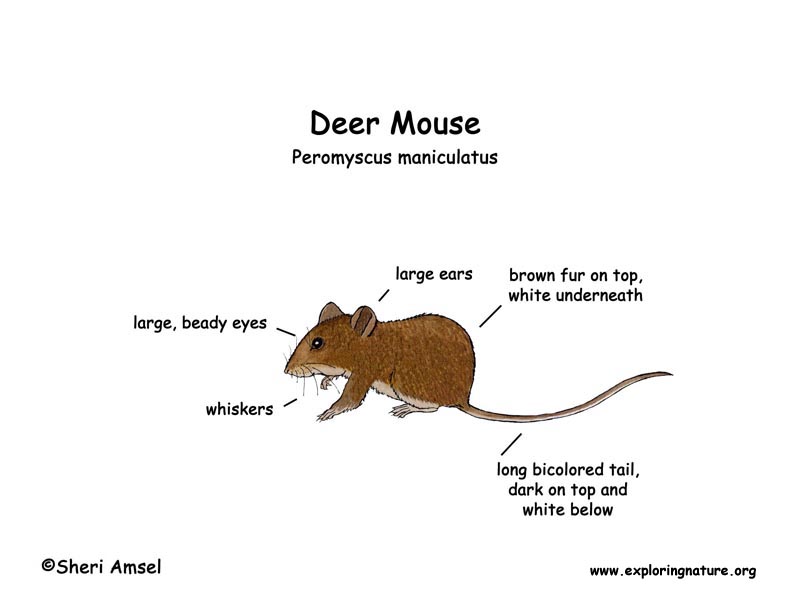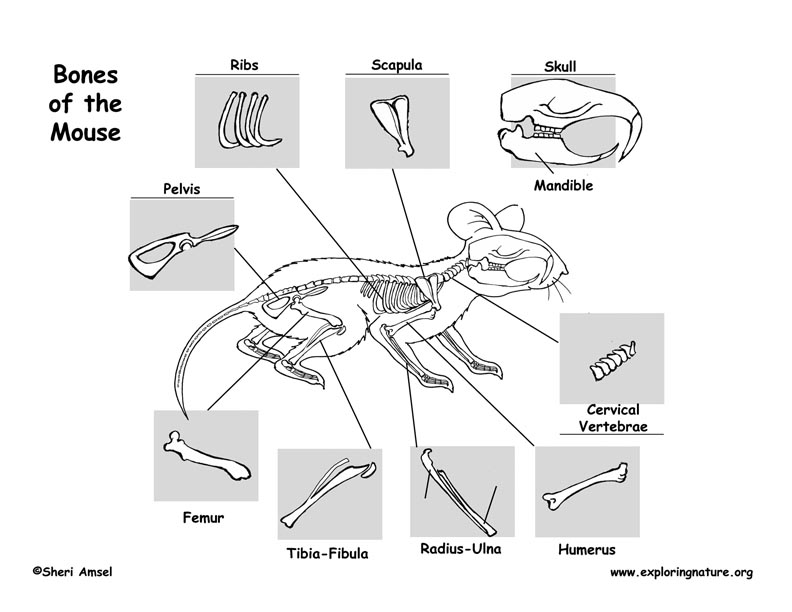

Deer mice are the most widespread rodent in North America.
They can be found from Alaska to Mexico. They are most common in moist forests, but can be found in scrublands and prairies.
They are reddish-brown on their backs and white on their bellies. They have a bi-colored tail (dark on the top and white on the bottom). They are about 6-inches long and weigh about an ounce.
They are active at night (nocturnal).
They eat plants, fruits, seeds and insects.
Deer mice are an important food source for many predators, including coyote, fox, hawks, owls, etc.
Females are pregnant for about 25 days (gestation), having 4-5 babies per litter. They can have 10 litters every year.
They live for about 2 years. They are listed as Lower Risk - least concern.
Kingdom: Animalia
Phylum: Chordata
Subphylum: Vertebrata
Class: Mammalia
Order: Rodentia
Suborder: Myomorpha
Family: Cricetidae
Subfamily: Neotominae
Genus: Peromyscus
Species: Peromyscus maniculatus
When you research information you must cite the reference. Citing for websites is different from citing from books, magazines and periodicals. The style of citing shown here is from the MLA Style Citations (Modern Language Association).
When citing a WEBSITE the general format is as follows.
Author Last Name, First Name(s). "Title: Subtitle of Part of Web Page, if appropriate." Title: Subtitle: Section of Page if appropriate. Sponsoring/Publishing Agency, If Given. Additional significant descriptive information. Date of Electronic Publication or other Date, such as Last Updated. Day Month Year of access < URL >.
Amsel, Sheri. "Mouse (Deer)" Exploring Nature Educational Resource ©2005-2024. March 25, 2024
< http://www.exploringnature.org/db/view/354 >


